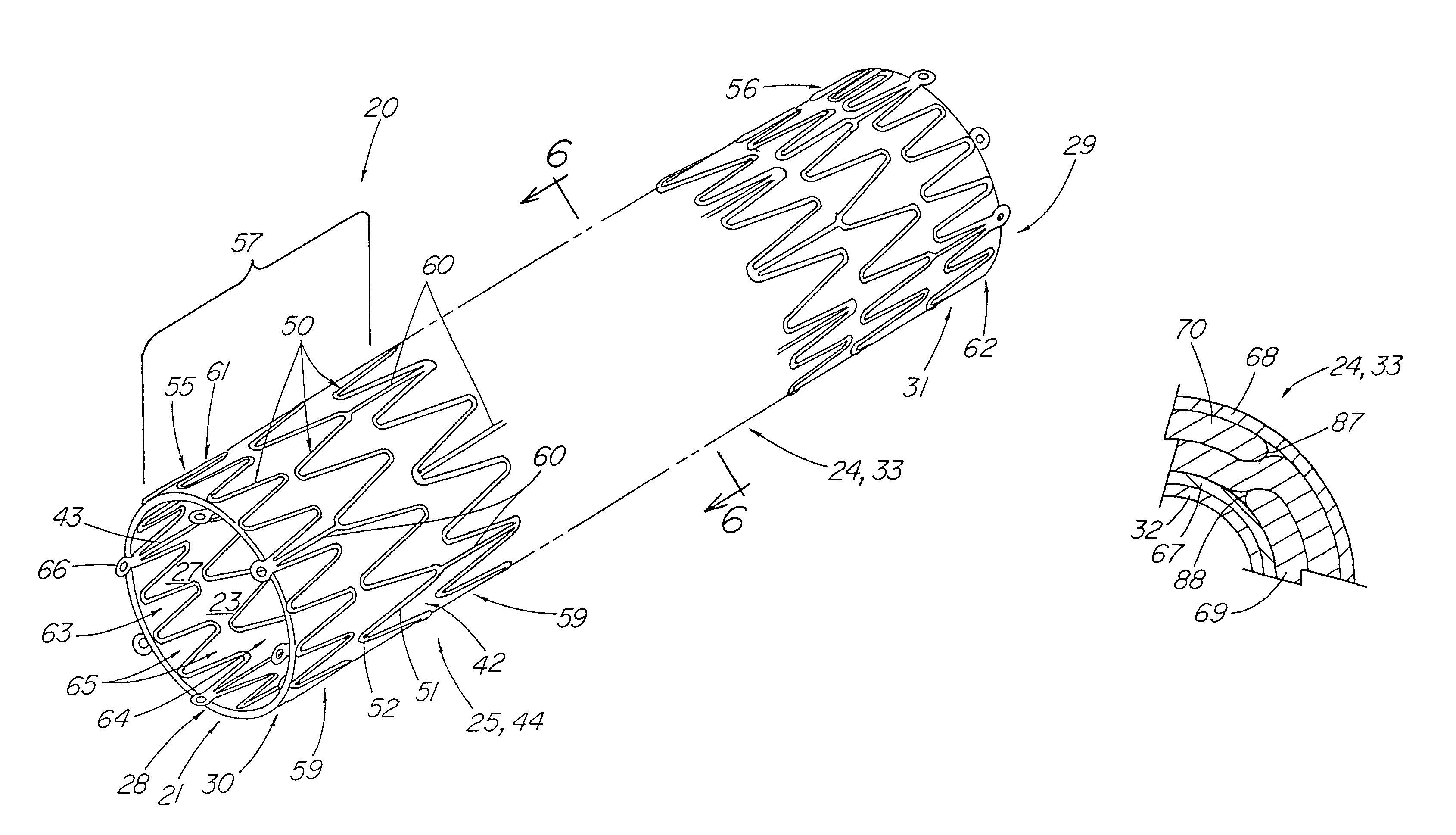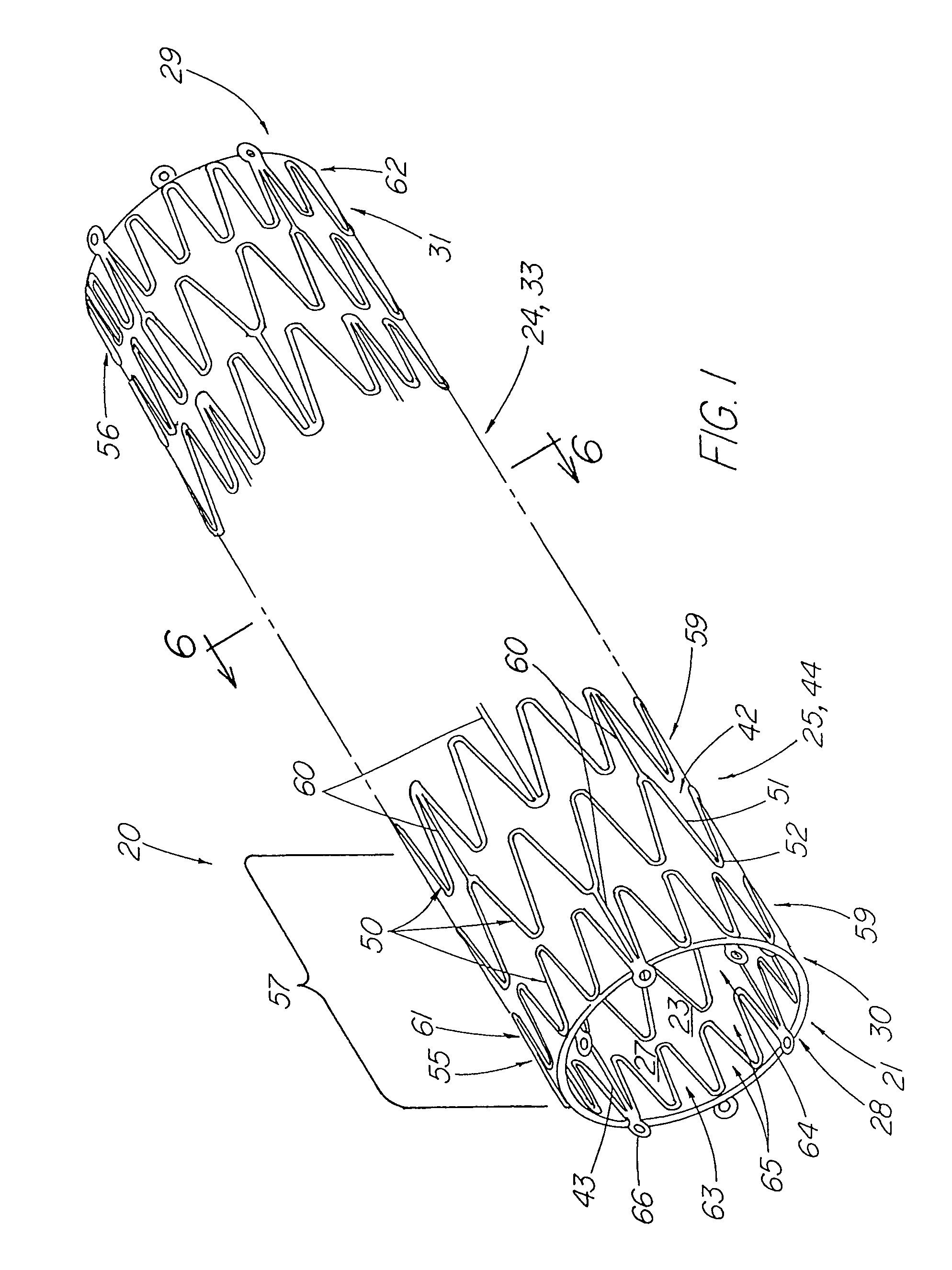Stent tissue graft prosthesis
- Summary
- Abstract
- Description
- Claims
- Application Information
AI Technical Summary
Benefits of technology
Problems solved by technology
Method used
Image
Examples
Embodiment Construction
[0037]FIG. 1 depicts a pictorial view of a preferred illustrative embodiment of stent tissue graft prosthesis 20 of the present invention. In addition, this preferred embodiment depicts the best mode of the present invention. Stent tissue graft prosthesis 20 includes a first or inner expandable stent 21 having a passage 23 extending longitudinally therethrough, a tissue graft 24 disposed on inner stent 21 and a tubular member 25 such as a second or outer expandable stent 44 with a passage 27 extending longitudinally therethrough and disposed over the tissue graft and around the inner expandable stent so as to advantageously retain the tissue graft disposed on the first inner stent. The first or inner expandable stent has a distal inner stent end 28 and a proximal stent end 29. Similarly, tissue graft 24 has a distal graft end 30 and a proximal graft end 31. In like fashion, tubular member 25 and, in particular, outer expandable stent 44 includes distal tubular or outer stent end 55 ...
PUM
 Login to View More
Login to View More Abstract
Description
Claims
Application Information
 Login to View More
Login to View More - R&D
- Intellectual Property
- Life Sciences
- Materials
- Tech Scout
- Unparalleled Data Quality
- Higher Quality Content
- 60% Fewer Hallucinations
Browse by: Latest US Patents, China's latest patents, Technical Efficacy Thesaurus, Application Domain, Technology Topic, Popular Technical Reports.
© 2025 PatSnap. All rights reserved.Legal|Privacy policy|Modern Slavery Act Transparency Statement|Sitemap|About US| Contact US: help@patsnap.com



